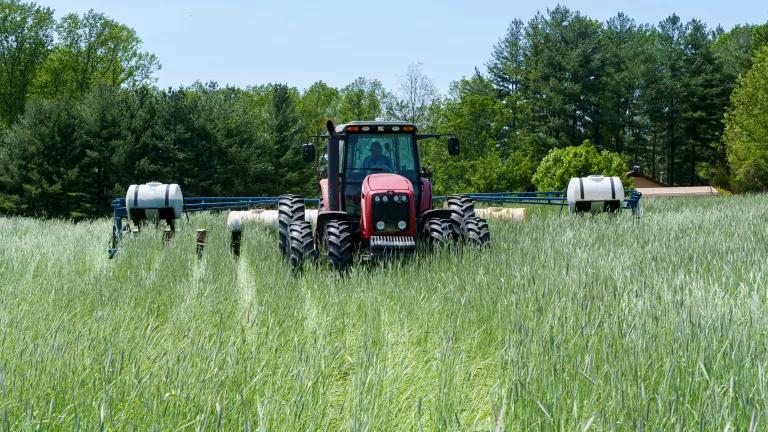Amidst groans of being more stuffed than the bird itself, Americans will toss a whopping $282 million of uneaten turkey into the trash this Thanksgiving, contributing to the $165 billion in uneaten food Americans waste every year. Along with trashing uneaten turkeys, they’ll be wasting the resources necessary for its production -- meaning 105 billion gallons of water (enough to supply New York City for over 100 days) and greenhouse gas emissions equivalent to 800,000 car trips from New York to San Francisco. That’s enough turkey to provide each American household that is food insecure with more than 11 additional servings, and 17.9 million American households suffer from food insecurity.[i]
Nationwide, consumers will purchase around 736 million pounds of turkey[ii] this Thanksgiving, of which about 581 million pounds will be actual meat[iii]. The USDA reports that 35% of perfectly good turkey meat in the U.S. does not get eaten after it is purchased by consumers (and that’s not including bones). This compares with only 15% for chicken. Why is so much more turkey wasted than chicken? “Possibly because turkey is more often eaten during holidays when consumers may tend to discard relatively more uneaten food than on other days,” the USDA writes.
And unless we take action to prove the USDA wrong, we’ll be throwing away about 204 million pounds of that meat and about 1 million tons of CO2 and 105 billion gallons of water with it. Per pound, the resources needed to produce that turkey are equivalent to driving your car 11 miles and taking a 130-minute shower (at 4 gallons/minute).* The price tag on that nationwide will be $282 million, according to prices from the Farm Bureau’s annual Thanksgiving price survey. And that’s to say nothing of the vast amounts of antibiotics used to produce turkey meat, leading to antibiotic resistance, which you can read more about here.
This outlandish wastefulness may seem absurd, but only because it’s rare that we stop and appreciate just how much goes into getting food to our tables. It’s the ultimate irony, really. We feast to celebrate that our ancestors had enough food to survive their first winter, acknowledging that once upon a time food was something to be grateful for. Then the next day, we throw half of it away.
Our Thanksgiving Feast brings too much joy and requires too many resources to just toss. These wasteful holiday tendencies have worsened over time, with portion sizes growing astronomically in the last 40 or so years. Fortunately, there are a bounty of ideas that can help us creatively repurpose leftovers and give them new life for days to come. The Food Network, Martha Stewart, and just about every other cooking site out there share recipes. And most chicken recipes can be made with turkey too.
You can be sure that those pilgrims were truly grateful for the food before them. This Thanksgiving, I invite you to do the same. Stop for a moment and imagine everything it takes to bring that brilliant feast to your table—the grains that were grown to feed your turkey, the bog that nurtured your cranberries, the land that allowed your pumpkin to spread its big leaves all over, and the hands that worked tirelessly to grow our food. Then, go ahead and dig in!
[i] Here’s the math: Producing one pound of turkey meat releases 5 kg of CO2 emissions according to the Environmental Working Group and uses 520 gallons of water (if it’s similar to chicken production as estimated by the Water Footprint Network.). At 423 grams of CO2 per mile as estimated by the EPA, that’s a per-pound equivalent of driving your car 11 miles and taking a 130-minute shower (at 4 gallons/minute). Nationwide, consumers will purchase around 736 million pounds of turkey[i] this Thanksgiving, of which about 581 million pounds will be actual meat[i]. Using the USDA estimate of 35% consumer loss for turkey, that amounts to 204 million pounds of meat discarded. Multiplied by the above numbers, that equates to a total of about 1 million tons of CO2 and 105 billion gallons of water with it. New York City consumes about 1 billion gallons of water per day and San Francisco is 2915 miles from New York, according to Google. USDA defines a serving as 3-4 ounces of lean meat—four ounces were used for this calculation. 17.9 million households in the US are food insecure according to the USDA.
[ii] From National Turkey Federation 2011 estimate: http://www.eatturkey.com/consumer/history/history.html
[iii] Uses 21% inedible portion estimated in above USDA report



